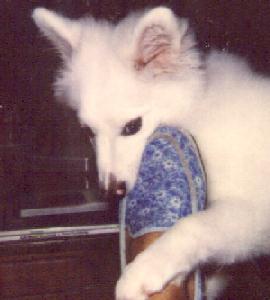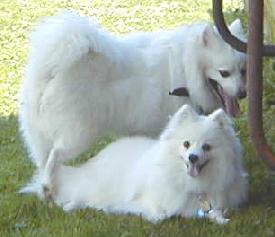Should I adopt a puppy or and older dog?
- There are advantages and disadvantages to both choices. Raising a puppy is an enormous commitment and requires alot of patience, and time, to train and socialize the puppy. Some considerations are housebreaking and the usual chewing/destruction stage.The advantage of puppydom is that you can allow the dog to grow with your family, provided you are prepared for the work involved. And, of course, Eskie puppies are unbelievably cute--even when peeing on your shoe. You can adopt a dog up to three years old and still experience the energy and playfulness that people associate with a baby puppy--and yet avoid some of the puppy issues, particularly housebreaking. An older dog is a wonderful choice for busy homes where the family prefers to integrate the dog into their lifestyle as quickly as possible. The advantage of an older dog is that the temperment and personality has fully formed and you can select a dog by temperment that will do well in your paticular home. Dogs in the adult age range--3 and up are excellent choices for family companions, or for those owners with interest in obedience, agility or therapy dog training. Mature dogs, ages 8 and over, make wonderful, loving indoor companions for a relaxed, slow paced environment. These dogs are often overlooked because of their ages, and they really make wonderful, loyal pets.
|
 |






